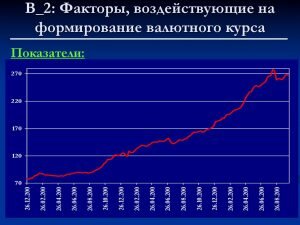Economic
growth may be defined as an increase in the total output of a nation over time. It
is usually measured as the annual rate of increase in a nation’s real GNP.
Economic growth represents the expansion of a nation’s production-
possibility frontier (or
PPF).
PPF
shows the maximum amounts of production, that can be obtained by an economy, given
the technological knowledge and quantity if inputs available.
Economic
growth is not just an abstract concept. It is vital for the citizens of a country
because economic growth, in terms of growth of output per capita, means growing real
wages and rising living standards.
Economic growth usually proceeds slowly. Even the most prosperous
economies only grow 2-3
per cent a year. Nevertheless economic growth rates like compound interest — a
steady growth rate of 2 per cent each year will result in a significantly larger and
healthier economy in only ten years.
Economists
usually study economic growth over long periods of time. For example, economic
historians have discovered that over the last century the average annual growth rate
for the Japanese economy is less than two points
larger than Great Britain’s. This small difference
has resulted in Japan’s emergence as an international economic powerhouse.
Meanwhile, Great Britain has fallen from its position as the world’s strongest
economy to one that is struggling.
Vocabulary
the annual rate of increase –
щорічний рівень (тариф) зростання
expansion
– розширення
production-possibility
frontier – кордон (межа можливостей виробництва)
amounts
of production – обсяги виробництва
vital
– життєво важливий
to
proceed – діяти, чинити
prosperous
economies – процвітаючі економіки
the
average annual growth rate – середній річний рівень росту.
І.
Complete the sentences using the text:
1.
Economic growth may be
defined as … .
2.
Economic growth represents
… .
3.
Economic growth is vital
for … .
4.
Economic growth usually
proceeds … .
5.
Economists usually study
economic growth over… .
II.
Answer these questions, basing your answers on the text:
1.
How may economic growth be
defined?
2.
How is it usually measured?
3.
What does economic growth
represent?
4.
What does production
possibility frontier show?
5.
Is economic growth an
abstract concept?
6.
Economic growth usually
proceeds slowly, doesn’t it?
7.
How do economists usually
study economic growth?
8.
What have economic
historians discovered?
III.
Say whether these statements are true or false and if they are false, say why.
1.
Economic growth may be
defined as an increase in the total output of a nation over a period of time.
2.
Economic
growth represents the expansion of a nation production —
possibility frontier.
3.
Economic growth is an
abstract concept.
4.
One goods measure of
economic growth is real per capita GNP.
5.
Economic growth usually
proceeds quickly.
6.
Economists usually study
economic growth over long periods of time.
7.
Economists
have discovered that over the last century the average
annual growth rate for
the Japanese economy is less than two points larger than Great Britain’s.
Economic
growth can occur as a result of a growing labour force, additions to the nation’s
stock of capital equipment, and improved productivity. Today, the United States
labour force is not growing as fast as in previous decades because the “baby boom”
generation has already entered the work force. In addition, the rate women are
entering the work force is slowing.
The
stock of capital equipment grows when business invests in tools, machinery, buildings and facilities. In the United States investment
in capital goods has been a steady 10 percent of GNP for the past three
years. But during the same time period, the Japanese have invested over 16-19
percent of their GNP in capital goods. It helps explain why the Japanese economy is
growing faster than the U.S. economy.
Investment
can be aimed at increasing productive capacity or at research and development
(R&D). R&D can be used to develop new products (product innovation) or to
develop new processes to cut the cost of
production and improve productivity. Both product and process
innovation are important.
The
U.S. spends twice as much on product innovation than on process innovation. The
Japanese do just the opposite. They spend twice
as much on process innovation as they do on product innovation.
This may be one reason why the Japanese are beating the U.S. in the ability
to develop a better mousetrap and bring that mousetrap to the market faster than we
do.
The
Japanese and other foreign competitors do not just build a cheaper mousetrap because
they have lower labour costs. Half of American trade deficit world-wide comes from
industries overseas that pay their workers more than the same industries in the U.S.
pay their workers. Process innovation leads to reduced manufacturing costs which can
be an important reason for increased market share and profits.
Vocabulary
a
growing labour force – зростання робочої сили
productivity
– продуктивність праці
previous
decades – попередні десятиліття
capital
goods – засоби виробництва
the stock of capital equipment – фонд (запас)
засобів виробництва
to
be aimed at – бути націленим на
product
innovation – оновлення продукту
to
cut the cost of production – знизити вартість
виробництва
to
improve productivity – покращити продуктивність
mousetrap
– мишоловка
to
reduce manufacturing сosts – зменшити виробничі витрати
process
innovation – процес оновлення.
І.
Complete the sentences using the text:
1.
Economic growth can occur
as a result of … .
2.
The stock of capital
equipment grows when … .
3.
Investment can be aimed at
… .
4.
The U.S. spends twice as
much on … .
5.
Process innovation leads
to … .
II.
Answer these questions, basing your answers on the text:
1.
What can occur as a result
of a growing labour force, additions to the
nation’s stock of capital equipment, and improved productivity?
2.
Why is the United States
labour force not growing as fast as in previous decades?
3.
The rate women are
entering the work force is slowing, isn’t it?
4.
When does the stock of
capital equipment grow?
5.
What helps explain why the
Japanese economy is growing faster than the U.S. economy?
6.
What can investment be
aimed at?
7.
Does the U.S. spend twice
as much on product innovation or on process innovation?
8.
Process innovation leads to reduced manufacturing costs,
doesn’t it?
III.
Say whether these statements are true or false and if they are false, say why.
1.
The «baby boom»
generation has already entered the work force.
2.
The USA has invested over
19 per cent of GNP in capital goods for the past three years.
3.
R & D can be used to
develop product innovation or to develop process innovation.
4.
The Japanese spend twice
as much on product innovation than on process innovation.
5.
The Japanese are beating
the USA in the ability to develop a better
product as they spend twice as much on process innovation
as on product innovation.
6.
Half
of American trade deficit world-wide comes from industries
overseas.
7.
Industries overseas pay
their workers less than the same industries in the USA do.
8.
Reduced manufacturing
costs can be an important reason for increased market share and profits.
The
concept of unemployment — the state of being out of work — relates directly to an
economy’s ability to supply jobs for its people. Its study involves the problem of
measurement the different kinds of unemployment, as well as the concept of full
employment.
Two
measures are used to determine the success people have in finding employment, or
work. The first is unemployment rate. The second is the employment rate.
The most popular measure of unemployment is the unemployment
rate, which is determined
by dividing the number of unemployed persons by the total number of persons in the
civilian labour force.
As
a statistical measure, the unemployment rate does have some limitations. For one, it
does not count those people who have looked for work so long that they have become
discouraged and have stopped looking. During recessions, many people become so
frustrated that they simply «drop out» of the labour force. A person who does not
have a job is not classified as «unemployed» if he or she did not make an effort
to find a job within the past four weeks.
Another
limitation is that the unemployment rate counts persons as fully employed even
though they hold part-time jobs.
The employment rate is a measure of the people actually working
as opposed to the number
willing available to work.
To determine the employment rate the number of employed persons
is divided by the total
population less those people in the armed forces in such institutions as hospitals
and prisons, and under the age of 16.
One
advantage of this measure is that it is relatively easy to compile. Another
advantage is that it includes those people who tried to find a job became
discouraged, and have stopped looking for the time being. If enough people stop
looking for work because they are discouraged, unemployment rate goes down. The
employment rate is not affected, however, because these unemployed people already
are counted as part of the population available for work.
Vocabulary
unemployment
– безробіття
unemployment
rate – рівень безробіття
employment
rate – рівень зайнятості
limitations
– обмеження
to
look for – шукати
to
become discouraged – занепадати духом
recession
– спад зайнятості
to
become frustrated – втратити сподівання
to
make an effort – витрачати зусилля
part-time
job – тимчасова робота
to
compile – укладати
І.
Match each term in Column A with its definition
in
Column B:
|
Column |
Column |
|
1.
2.
3.
4.
5.
6.
7. |
a. b. c. d. e. f. g. |
II.
Answer these questions, basing your answers on the text:
1.
. What does the concept of
unemployment relate to?
2.
What measures are used to
determine the success people have in finding work?
3.
How is the unemployment
rate determined?
4.
What limitations does the
unemployment rate have as a statistical measure?
5.
Why do people «drop out»
of the labour force?
6.
Can a person without a job
be classified as «unemployed»?
7.
What persons are counted
as fully employed?
8.
How do we determine the
employment rate?
9.
What are the advantages of
the employment rate as a statistical measure?
10.
What happens to the rate
of employment and unemployment if enough people stop looking for work?
III.
Say whether these statements are true or false and if they are false, say why.
1.
Unemployment is the state
being out of work.
2.
Three measures are used to
determine the success people have in finding work.
3.
The most popular measure
of unemployment is the unemployment rate.
4.
The unemployment rate has
some limitations.
5.
A person who does not have
job is classified as «unemployed».
6.
The employment rate is a
measure of the people actually working as opposed to the number willing available to
work.
7.
There are two advantages
of this measure.
8.
The unemployment rate goes
up if enough people stop looking for work.
In
view of the complexity of the economic system, it is not surprising that there
should always be some unemployment, even though the number of vacancies may actually
exceed the number of job-seekers. «Friction» (i.e., the imperfections of the
labour market, such as the time lost between two jobs, lack of information) is
responsible for this type of unemployment. Anything that speeds up the search
process will obviously reduce «frictional unemployment» (e.g., more and better
information, job-centres, placement agencies).
«Seasonal
unemployment» is due to the seasonal pattern of work in some industries, most markedly in tourism, agriculture, and construction.
It is extremely difficult, if not impossible, to eliminate seasonal
unemployment, although careful planning of work in the building industry and, the
encouragement of a second «season» in tourism may help to mitigate the problem.
Frictional
and seasonal unemployment, although involving a considerable waste of resources and
much hardship, are not the real problem. This cannot be said of short-term «cyclical»
and long-term «growth-gap» unemployment, which are both caused by a deficiency of
demand.
«Structural
unemployment» is not due to any lack of jobs, but to a mismatch between the type
and/or location of jobs offered and the qualifications and/or location of the job
seekers. Some economists regard the geographical element of structural unemployment,
and some even structural unemployment as a whole, as a special variety of
frictional unemployment. Whatever classification so used, structural
unemployment is characteristic of periods with rapid and profound structural changes
in the economy. Suggested remedies are: retraining, increased geographical mobility
(retraining and relocation grants), short-term and medium-term labour market
forecasts, information campaigns on job opportunities, etc…
«Technological
unemployme



